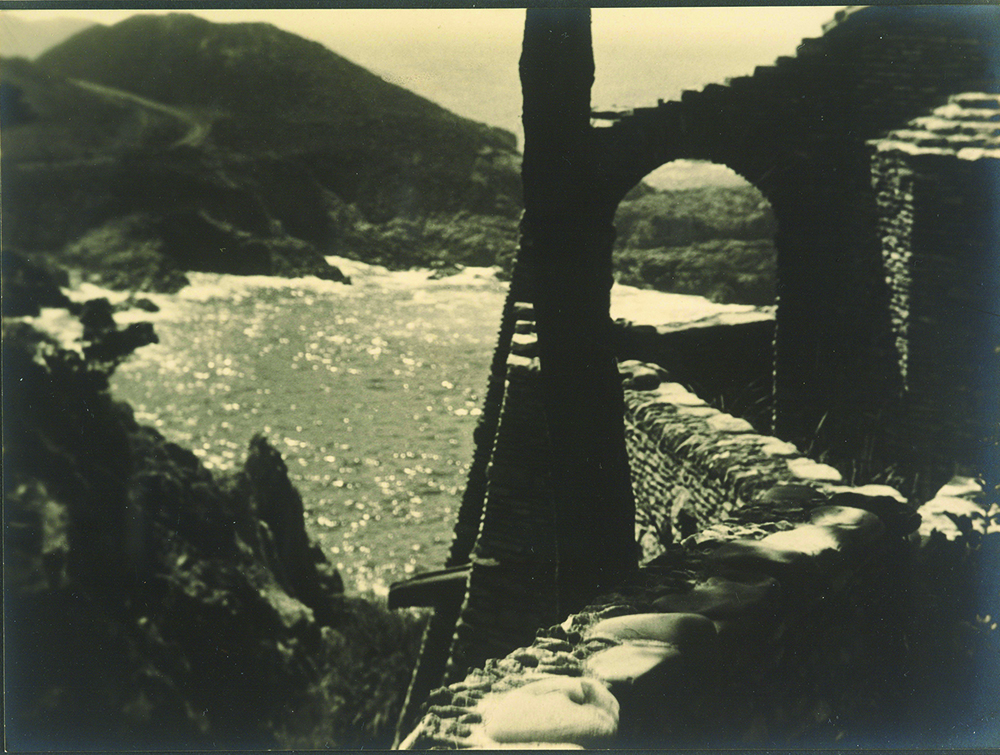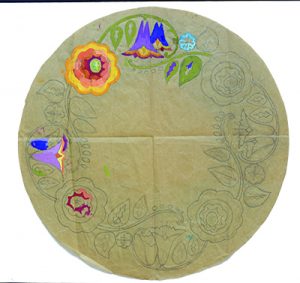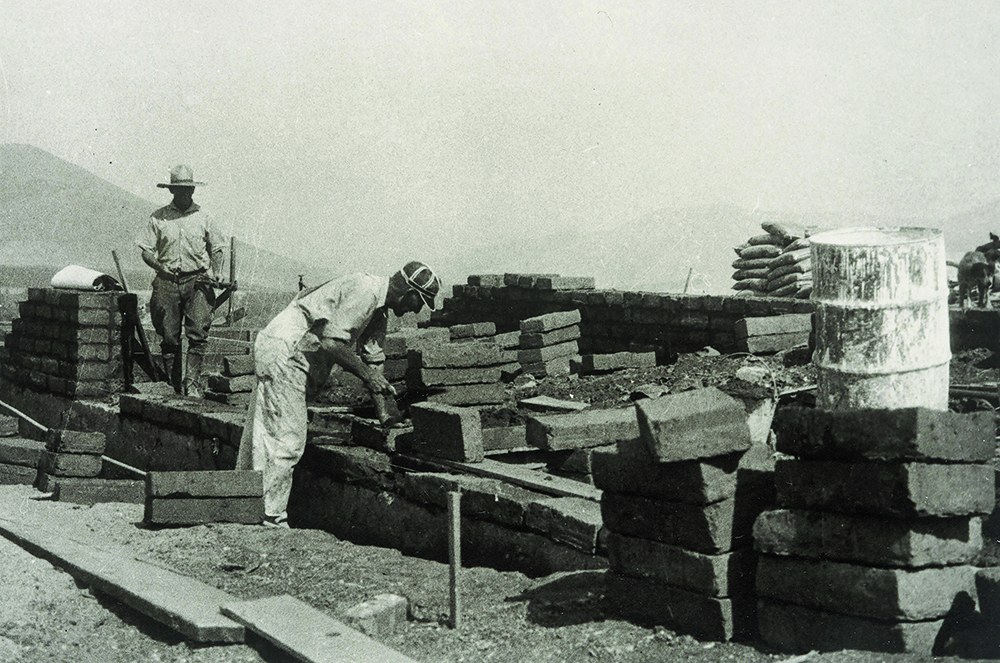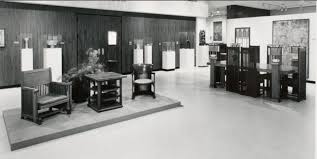EXPLORING THE MAKING OF THE GREENE & GREENE ARCHIVES
Over the past 7 years, I’ve visited the Greene & Greene Archives at The Huntington twice, once at the old Scott Gallery location and most recently at its new home at the Munger building. Each visit has been full of wonders such as family diaries, iridescent glass samples that resemble the glass in the Gamble House front door and dining room windows, beautifully composed and luminous photos of William Current, Greene and Greene plans, and fascinating items from the personal collection of Esther McCoy to mention a few. However, my most recent visit left me with a few questions about the collection that I thought I’d pose to Ann Scheid, archivist at the Greene & Greene Archives, knowing that she could finally satisfy my curiosity.
Update Editor: How did the Archives come into existence and what is the major function of the Archives?
Ann Scheid: The Archives began as the Gamble House Library (similar to the present Docent Library) and it was originally located in the attic of the house. The desk from the Robinson house, now on display in the Gallery at the Huntington, was used as the desk where records were kept and docents could check out books. From the very beginning, however, the collection contained unique original items. The original log book lists several hundred drawings of some of the Greenes’ most important houses, including Gamble, Blacker, Culbertson, Pratt, and Robinson. Another early accession was a complete set of Gustav Stickley’s The Craftsman.
Amazingly, all of the donations received accession numbers, a practice normally reserved for art collections. These numbers record the name of the donor, the year of the donation, and provide a unique identification number for the object. When we developed the online Greene and Greene Virtual Archives, this numbering system became the basis for our project and for the database catalogue for the entire collection. Thank you to that early docent who set up this great system!
Then and now, the major function of the Archives remains the same: to serve the Gamble House community, docents, students, and scholars from around the world; to provide illustrative material for popular and scholarly publications in print and online; to exhibit, maintain, conserve and properly store the drawings, documents, photographs, books, and artworks in the collection, and to integrate new donations into the existing collection. Besides the work of the Greene brothers, the Archives house the only extant records of the firm of the Heineman brothers, contemporaries of the Greenes and outstanding architects in their own right.
UE: Where did most of the materials come from?
AS: The first accession numbers are from 1967 and list a set of plans for the Freeman Ford house donated by Henry Greene’s son, William Sumner Greene. This pattern of donations from the Greene family, the Gambles and other Greene and Greene clients, docents, and many others has continued until today, when we now have over 450 donors listed. One of the biggest donors has been the Docent Council, which has purchased books, paid for binding The Craftsman, supported the Library/Archives with volunteers, and paid for reproductions of rare or fragile materials.
UE: Why are the Archives located at the Huntington?
AS: Well, you remember the first location was in the attic. As the collection grew, it was eventually moved to the garage, where it shared space with the Pasadena/Foothill Chapter of the AIA. The materials were stored in a Greene and Greene cabinet made for John Bentz (of the Bentz house on Prospect Boulevard), who used it in his Asian antique shop on South Raymond in Pasadena. It’s well-worn, I would say! With the opening of the Greene and Greene exhibition gallery at the Huntington in the early 1990s, the entire library moved there. It became the Greene and Greene Archives, which more closely describes its contents and function, when I was hired as the archivist in 2000.

UE: How do new items find their way to the Archives?
AS: A very good question! Sometimes by chance, sometimes by design, is the answer. Our largest recent accession has been the collection of photographs of the Greenes’ work by William Current, with over 2000 individual pieces, mostly prints and negatives. Several important items came in connection with the 2008 exhibition at the Huntington. Key gifts then included a pair of photographs of the James house in Carmel, as well as records and correspondence given by Barbara James, Mr. James’ daughter-in-law. Another recent generous gift came more recently from Virginia Hales, Henry Greene’s granddaughter, which includes charming snapshot photos of Henry Greene’s house and garden on Bellefontaine, now demolished.
And then sometimes I just pick up the phone and someone has something they want to give. That happened a few years ago, when I received a call from Jennifer Berkley, the then owner of the Darling house in Claremont. Soon after she and her husband Alan bought the house, a friend of theirs happened to be looking through old photographs in a shop in Boston and found four vintage professional photos of the house, which he immediately bought and gave to the new owners. Generously Jennifer passed them on to us, in exchange for digital copies. They are the only early photos that we know of and are very valuable for that reason, since they show the house before any alterations had been made.
Another great gift came from the Gould family of the Gould house in Ventura. The heirs were cleaning house before putting the house up for sale, when it would pass out of the family. They generously sent a meticulous collection of building records, accounts and correspondence kept by the family for generations since the house had been constructed in 1920, and added to in 1932. Sometimes people just don’t want to part with these precious items, but then we often are able to obtain copies, as in the case of the Richardson house in Porterville. Owner Bill Richardson has given us copies of photos showing how the adobe bricks were made onsite and also of the correspondence between his father and Henry Greene, a fascinating record of Henry’s approach to the project and of a time when letters were delivered 3 times a day and taking the train or driving to Porterville was a major expedition.
I also get calls not directly related to the Archives, but which lead to other discoveries. Some time ago I got a call from a woman in San Rafael who had an interesting lamp that she believed had come from the Cordelia Culbertson house. I sent her photos of the lamp, and she verified their identities. She was a descendant of the house’s second owner, Elisabeth Prentiss, and the lamp (with a new shade) is now exhibited on loan in the Greene and Greene gallery at the Huntington.
UE: Where are the other major holdings of Greene and Greene material?
AS: The largest collection of Greene and Greene drawings is at the Avery Architectural and fine Arts Library at Columbia University in New York City. Those drawings, basically the contents of the office of the Pasadena firm, had been stored by Henry Greene in his son’s garage. They were deposited at Avery in 1960 by Jean Murray Bangs, who had “borrowed” the drawings, intending to write a book on the Greene’s work, journalist and early promoter of the architecture of the Greenes, Bangs was married to architect Harwell Hamilton Harris, one of the “second generation” California architects identified by Esther Mccoy and himself heavily influenced by the Greenes’ work. Bangs never finished her book and so the drawings have remained “on deposit” at Avery ever since. At the time, Avery was probably the only library in the country that would have accepted the drawings, since architectural collections were not especially valued and were considered too unwieldy. Although they are much too far away and difficult to access, we can be thankful that the drawings survive.
Another collection, stemming from Charles Greene, is at the Environmental Design Archives at UC Berkeley. This collection, which went from Carmel to Berkeley after Charles’ death, includes many items that Charles took with him from the office when he left Pasadena: watercolor renderings, design sketches, correspondence and other miscellaneous records, as well as his own artwork. The EDA collection is especially rich in Charles’ personal correspondence and documents of his work for the Fleishhackers and D. L. James.
Strangely, many similar and related items have found their way into our collection at The Huntington, since Charles Greene’s Carmel house remained in the family until the early part of this century. Nathanael Patrickson Greene, Charles’s eldest son, lived in the house for decades and donated many items not sent to Berkeley to the Greene and Greene Archives. Thomas Gordon Greene, Charles’ youngest son, who later lived in the house, then donated much of the rest to the Greene and Greene Archives. This has resulted in the confounding situation of having a letter from Charles deposited in Berkeley and its answering letter deposited in our collection and vice versa, a source of headaches for scholars.
The idea to try to bring together the key items from these three geographically separated collections spawned the online Greene and Greene Virtual Archives, a collaboration among all three repositories. Gamble House Director Ted Bosley selected the items to be scanned for the GGVA Web site. A long-term vision is to scan all of the items documenting the buildings in the three collections, making these valuable resource materials more widely available.

UE: What is the most surprising or unusual item in the Archives?
AS: One of the most surprising items in the Archives is a small student notebook from 1905, owned by Grace T. Whitney, who was taking a course at the Pratt Institute in New York. Founded by oil tycoon Charles Pratt (father of the Greene and Greene client Charles M Pratt), the school provided training in the arts and crafts tradition in practical fields for students from working class backgrounds. Grace’s notebook documents a class at Pratt in design, recording an entire year devoted to such subjects as drawing, lettering, etching, and jewelry design. Her teacher was Ralph Johonnet, an artist who later moved to California and taught at the California Art Club in Los Angeles. Later notes in the book indicate that Grace Whitney took courses at the State College in Santa Barbara (now UC Santa Barbara). There she studied nutrition, weaving and embroidery. Most of her drawings in the book are for embroidery and jewelry designs. The Whitney notebook has no direct connection to the Greenes, but it is a fine document of what art and design students were learning in the period when the Greenes were developing their own design philosophy.



Leave a Reply